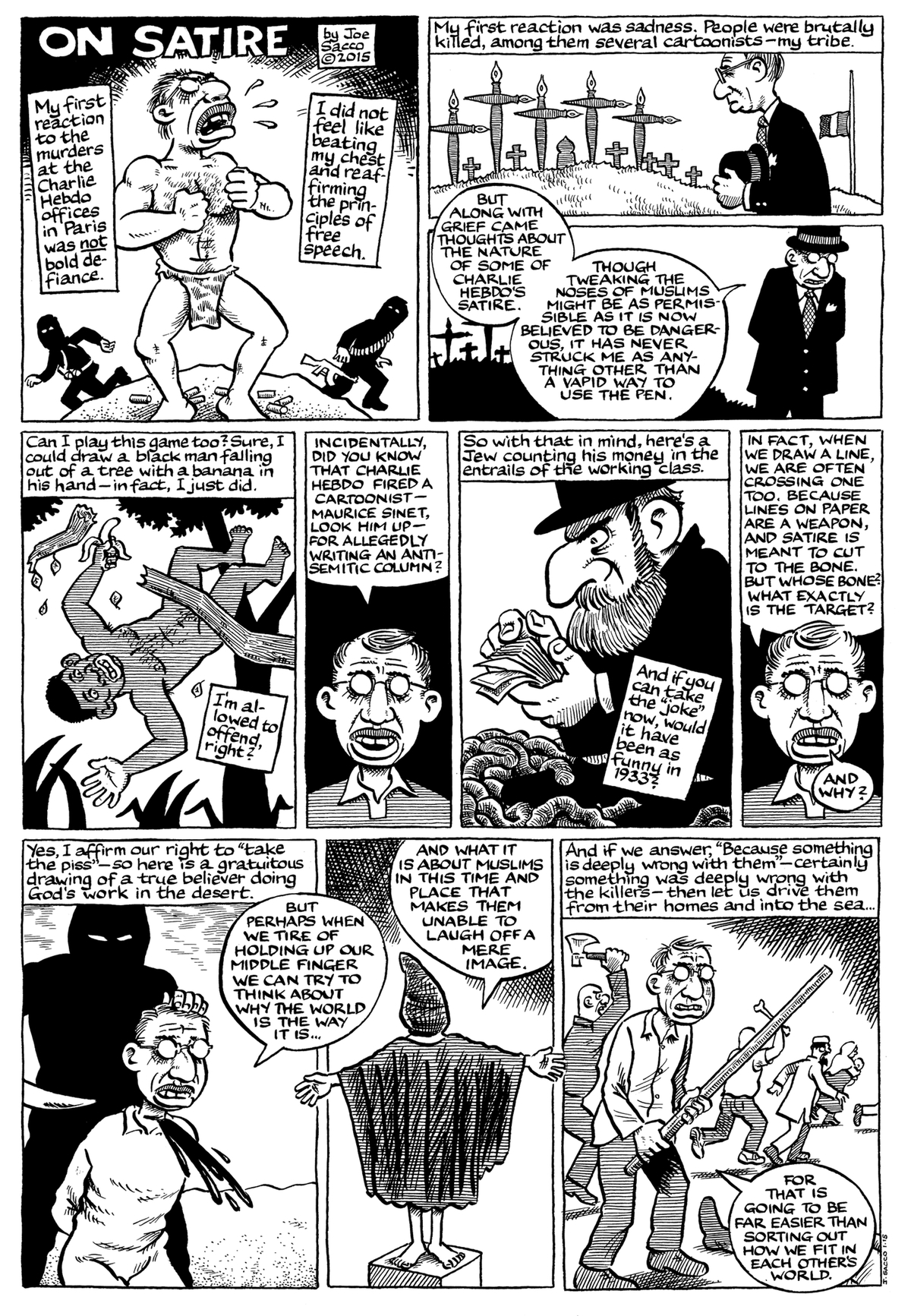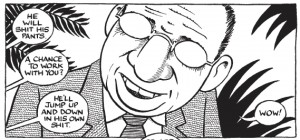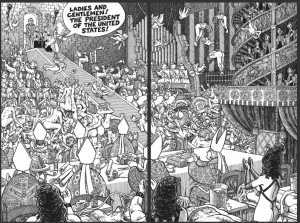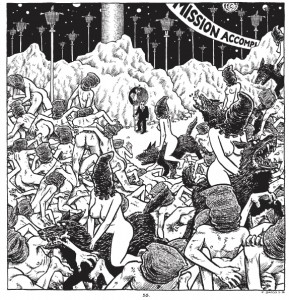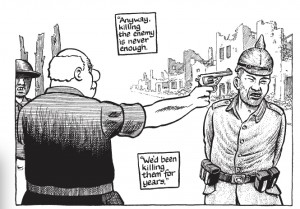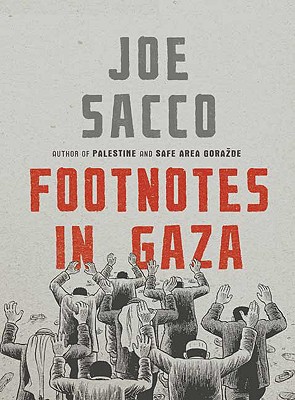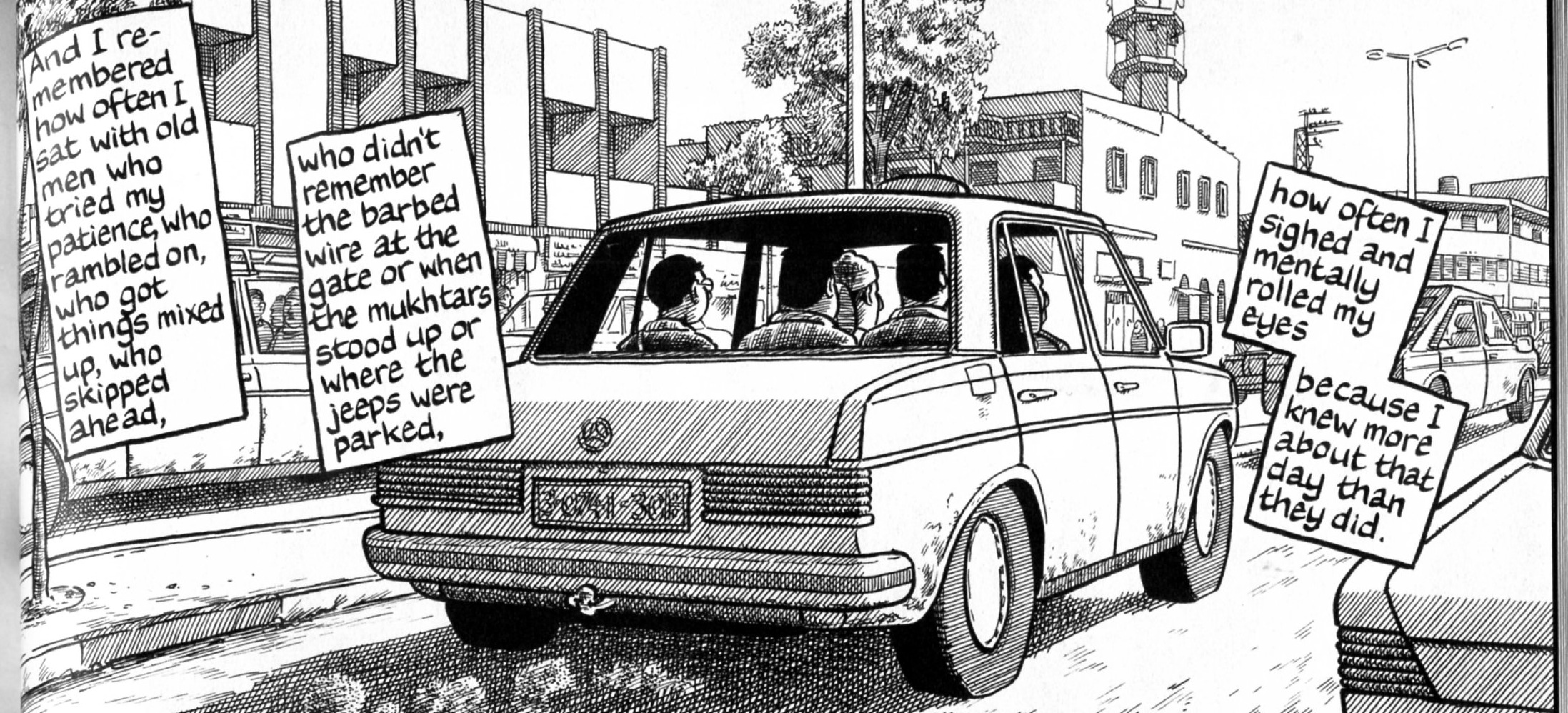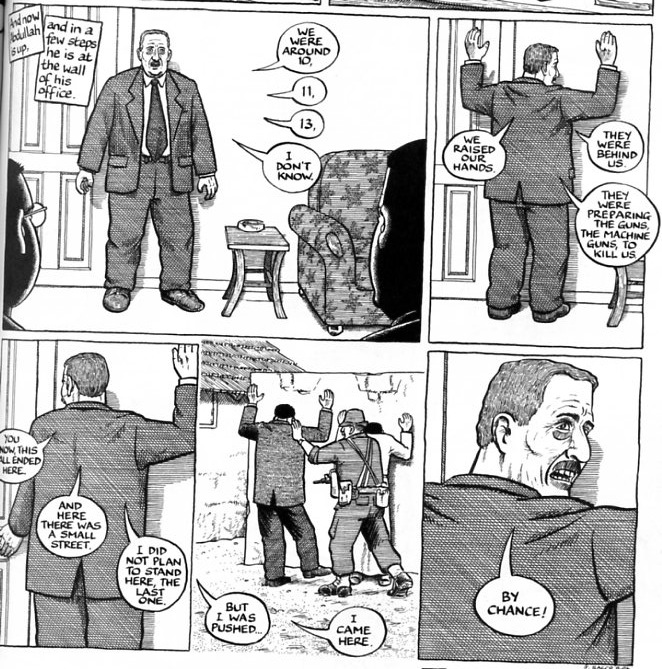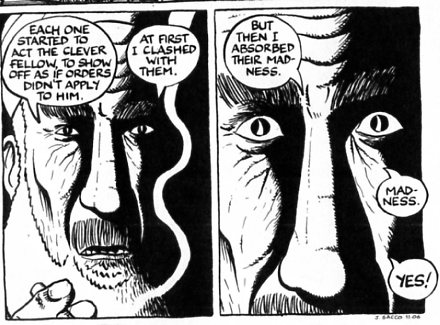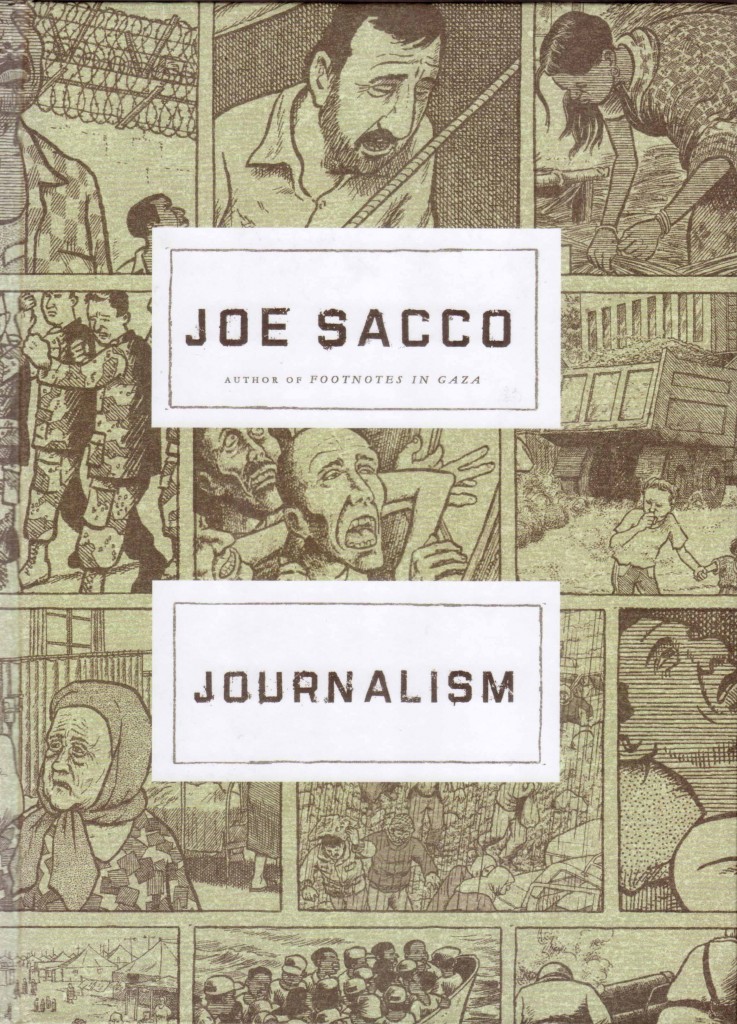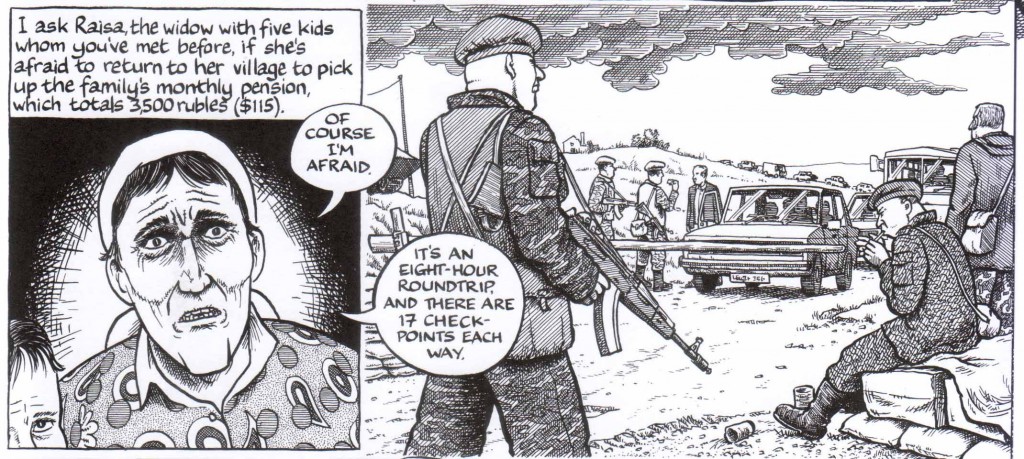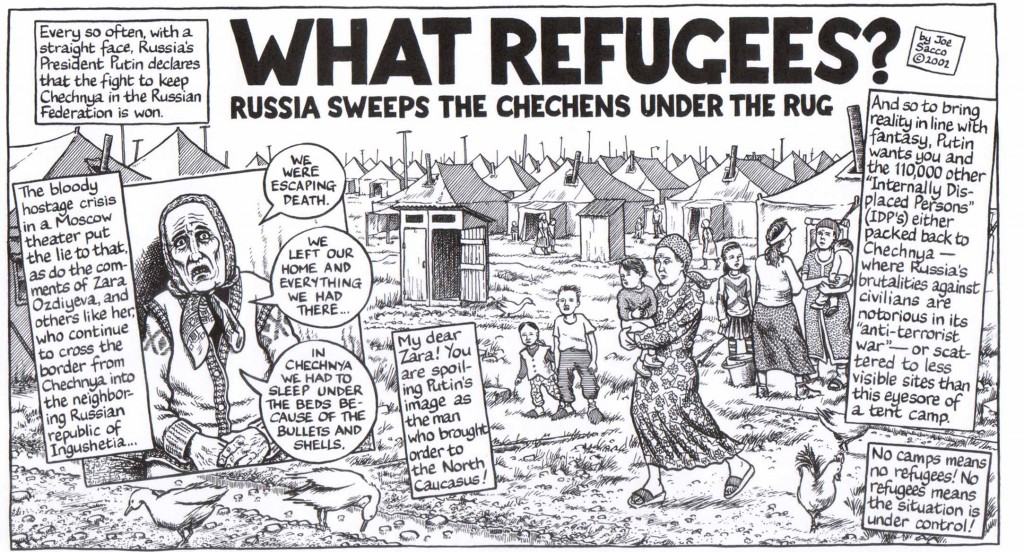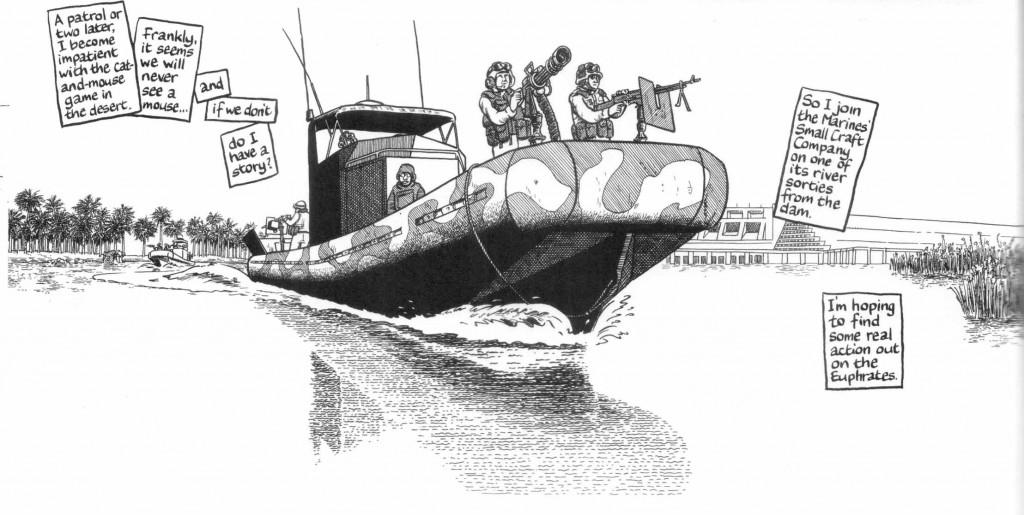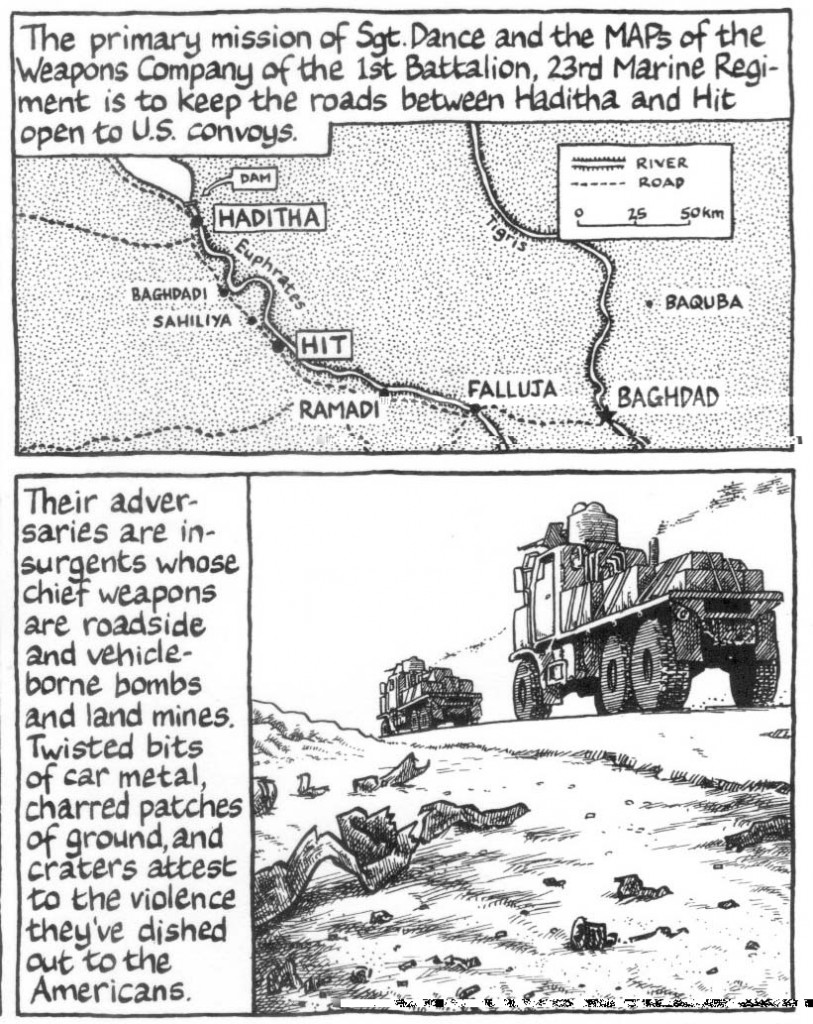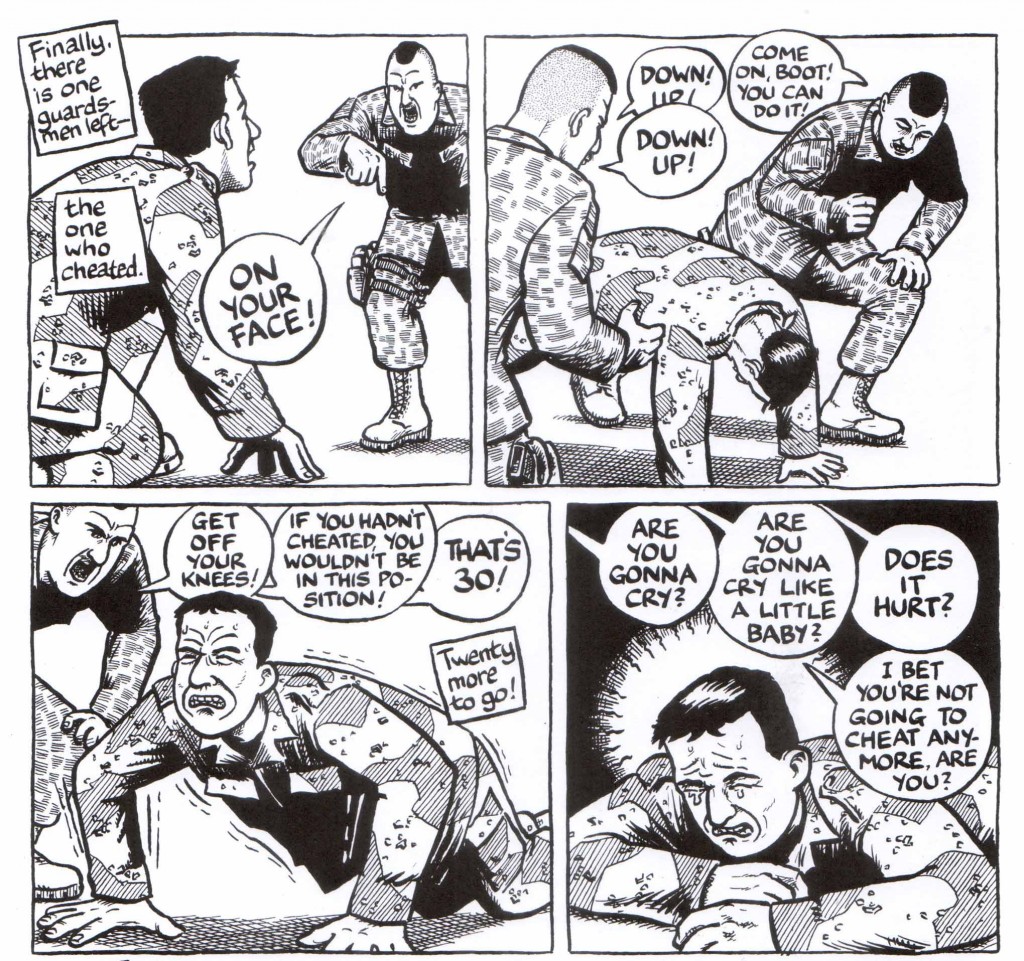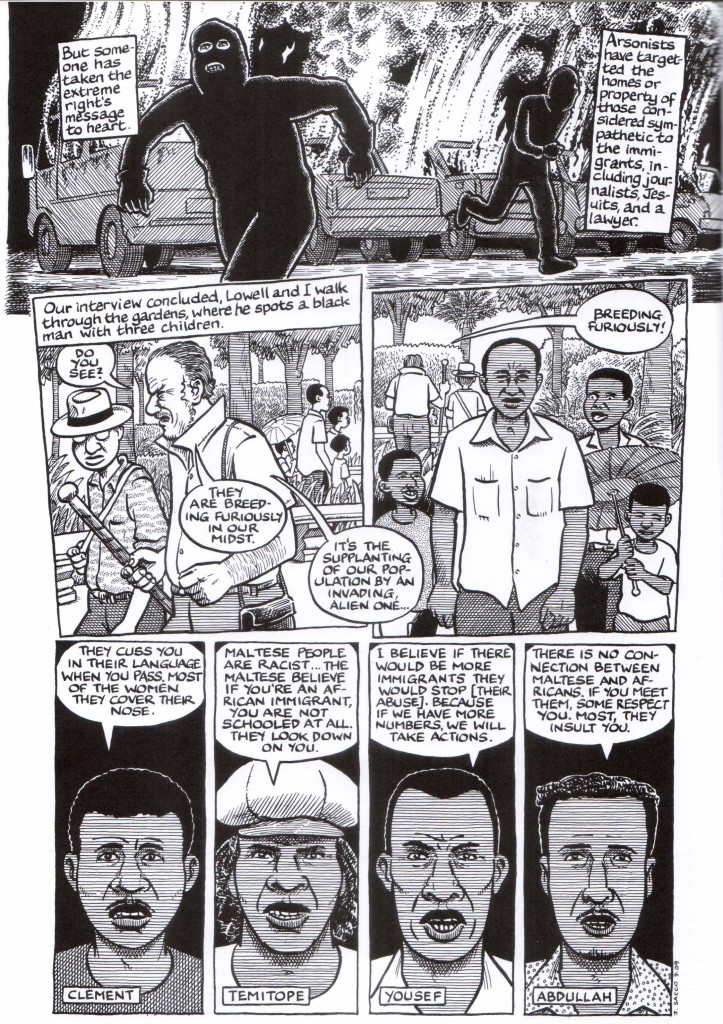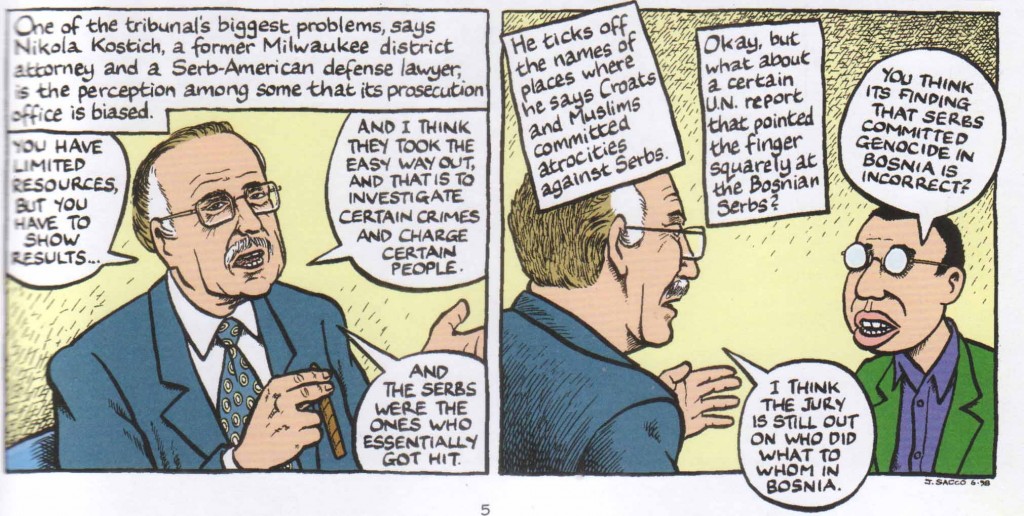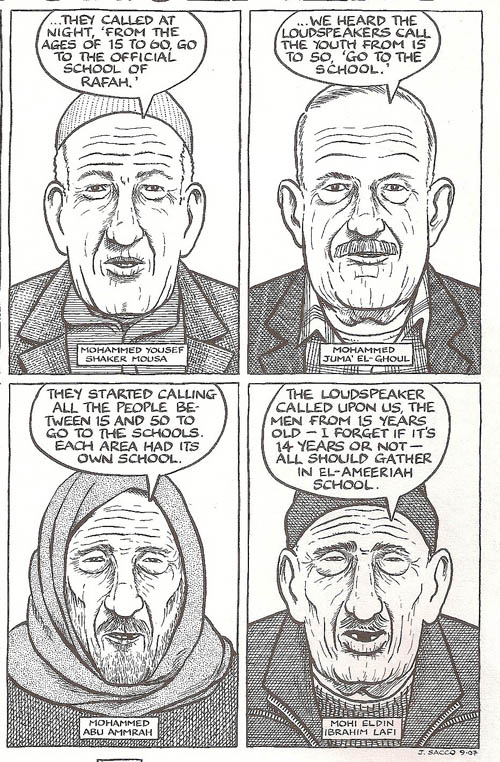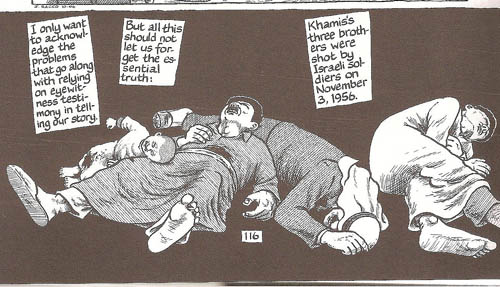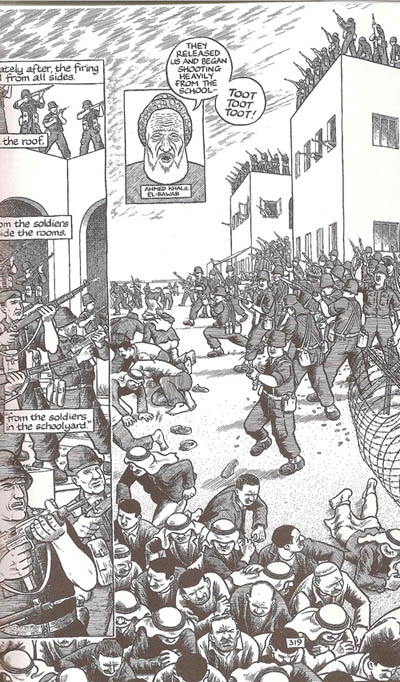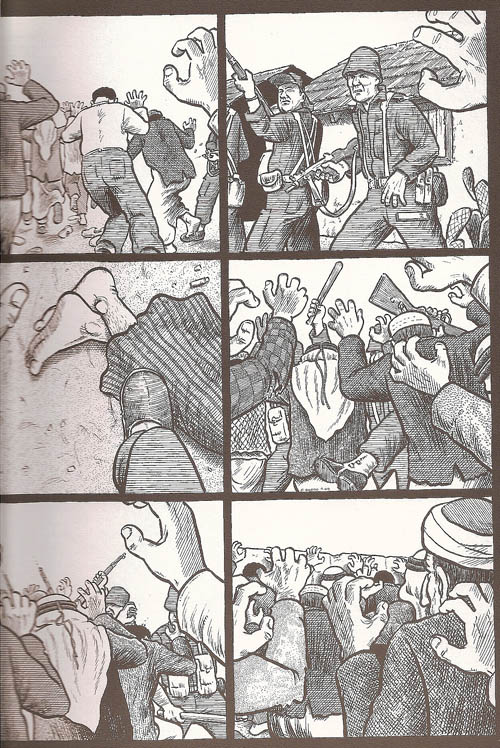Everyone seems to love “On Satire,” Joe Sacco’s cartoon for the Guardian responding to the Charlie Hebdo massacre, but some may not. Some may detest “On Satire” because the cartoon was reverent toward the victims. They may think Charlie Hebdo‘s Muhammad cartoons justified the attack, or were straightforwardly racist. On the other hand, some may detest Sacco’s cartoon because it portrays a mob chasing Muslims. Knowing that he made an earlier ethnographic comic about Palestine, they may suspect Sacco of trying to distract viewers from the real business of condemning Islam wholesale, stepping up drone attacks, and leveling Gaza.
For my part, however, I detest it for being so thoroughly middle-of-the-road and ambivalent even as it affects a seemingly bold, seemingly nuanced stance on an subject that is not simply abstract “issues,” but a messy, bloody conflict with a long history. Allow me a condensed close reading.
First panel: Oh, Joe Sacco is passionate to be sure, but he is not hotheaded! He is sincere and reverent, and looks good in a loincloth.
Second panel: Pens made into crosses, how very poignant, yet so visually klunky. Hey, you know who kills lots of journalists? The U.S. But their victims mostly aren’t Christian, so you’d have to figure out how to make a laptop into a crescent and star, so never mind. And there were Muslim Charlie Hebdo victims too, but whatever.
Third panel: Walks away still musing metonymically on “the pen.” If only it were a clever reference to Le Pen, but it isn’t.
Fourth panel: Black man falling out of a tree with a banana but no loincloth, with a big branch suggestively hiding his indubitably endowed groin, equals not racist because aware of its racism! Why don’t you just burn one of those pen-crosses on his lawn? Oh, because he lives in a tree. Ooo, Joe Sacco is such a firebrand, I can’t wait to see an anthropomorphized Koran going down on a pig!
Fifth panel: “The More You Know,” the less you worry about offending Israel. France actually has laws on the books prohibiting hate speech, and it has recently used those laws to shut down anti-Semitic Twitter users. Now hundreds of French troops are deployed protecting Jewish sites. Where are the troops protecting Muslims? Why don’t you look THAT up?
Sixth panel: The professor plods on- remember anti-Semitism? Subtext: perhaps Muslims are anti-Semitic, perhaps? And by the way, what is this about the evil Jew preying on the “working class?” Stalin was a genocidal anti-Semite, but in the West the conflation of Jews and Communists should be so familiar as to be unworthy of mention. Get your hate straight. And of COURSE anti-Semitism matters in 2015, just like in 1933- France has had dozens of hate attacks against Jews in the last few years.
Seventh panel: More rambling prattle, but I’m getting distracted by Sacco’s face– are those eggs with eyelashes strapped to his head?
Eighth panel: Again, so brave! Martyred for his bold stance on reasoned meandering ambivalent equivocation. “But perhaps when we tire of holding up our middle finger we can try to think about why the world is the way it is…” So mature, so stoic, so profoundly deserving of the royal “we.” Sure talks a lot for a guy with a severed larynx.
Ninth panel: Abu-Ghraib Joe sez, “What is it about Muslims?” Wait, what is what about who? Who tortured who again? Traumatized prisoners say the darnedest things!
Last panel: Oh, I get it! “Drive them from their homes,” sort of like Israel right? He is part of an angry mob now– Israeli settlers? the IDF? Right-wing European nationalists? Well, there’s no hilarious stereotype to explicate that tragic-ish image- you just figure out that the woman being chased has a headscarf, the guy being chased has a beard and a taqiyah, and there’s Joe Sacco looking tough and angry again, this time holding a club while ironically continuing to mouth reasoned platitudes. But wouldn’t “sorting out how we fit in each others’ world” be illustrated better by the Prophet getting a back-door fist-bump from Gene Simmons of KISS—a Jew who genuinely doesn’t give a fuck who he offends?
But seriously, did Sacco say, “What is it about Muslims?” Not “some Muslims,” not “jihadi Muslims” or “fundamentalist Muslims” or whatever, but “Muslims in this time and place” (so qualified, yet so totalizing). The issue here is all about context. Explicit context: the jungle Negro and the hook-nosed moneylender are inoffensive because we are told not to be offended. Implicit context: the reader is not a Muslim, and can relate to crosses and complaints about those Muslims nowadays. Ignored context: radicalized Muslims are responding to a state of indiscriminate, cowardly, automated, endless imperial warfare. Arbitrary murder is answered by arbitrary murder.
And there is no reason to think that the cartoonists at Charlie Hebdo were unaware of the threats made to the lives of American cartoonists drawing the Prophet, as well as of the infamous Danish Muhammad cartoon (which the CH staff can be seen discussing on video). They absolutely deserved to draw their cartoons and not lose their lives, BUT what if they deliberately took a risk based on principle? What if they chose a stance that put them in the line of fire? Is that foolish or brave? Are they martyrs or casualties of war? Don’t ask Joe Sacco.
Writing in Slate on French secularism, or laïcité, Rachel Levy points out that in French public schools, “Muslim girls can’t wear their veils, Jewish boys can’t wear their kippot, and Christians can’t draw attention to their crosses.” As a country that has always had religious fanatics and never, despite strenuous fantasizing, a substantial monoculture, Americans don’t readily identify with a political stance that curtails expression of personal beliefs. And yet, America has the enormously successful Family Guy, a show that I think tops South Park, Ed The Happy Clown, Angry Youth Comix, or any Ralph Bakshi movie for unfettered omnidirectional contempt and bile. In France, culture is taken seriously enough to enforce bans on clothing, whereas in the U.S., to paraphrase Slavoj Zizek, culture is what people believe in without taking it seriously.
This is where I come from in trying to explain my repulsion at Sacco’s nonspecific sanctimony. France embraced African-American expatriates, but seems committed to marginalization of religious minorities. America elected a black President, but also keeps imprisoning black men, or just executing them in the street, or in Wal-Mart (maybe they all just fell out of trees?). Plus Americans can’t make art about serious ethical issues without being mealy-mouthed and pompous, unless it’s just a TV show and is thus divorced from any larger meaning. Saudi Arabia, from which the Charlie Hebdo attacks (like the 9/11 attacks) may have been planned, is the country with the most repressive Islamist regime in the world, and is also our key Arab ally. These three seemingly distinct places share one philosophy: money talks. And if all you have to offer by way of protest are overexplained, hyperqualified, utterly trite faux-provocations, that bullshit walks.
________
For all HU posts on Satire and Charlie Hebdo click here.

